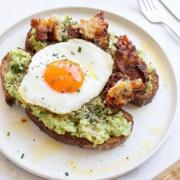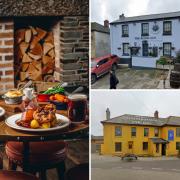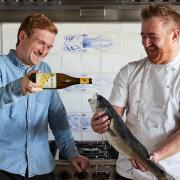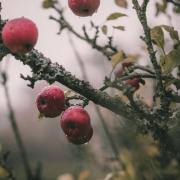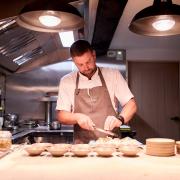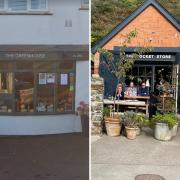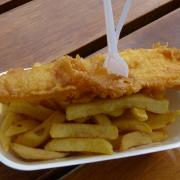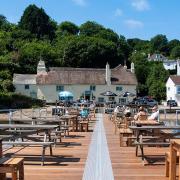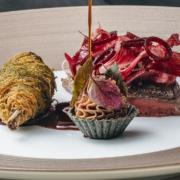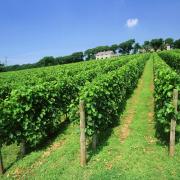At the last count, Cornwall was home to more than 50 cheeses: soft, hard, blue, gold veined, cow, goat – organic and vegetarian - there really is something for everyone. So if you are looking for a foodie challenge in 2021, you could do worse than work your way through the cheese map of Cornwall. Start at Davidstow on the north coast and work your way around the peninsula.
While many cheeses base their style on existing cheeses, there are plenty of new styles on offer. Here’s our ultimate Cornish cheese board
Save yourself some time and head to the Great Cornish Food Store which stocks a huge variety of different cheeses. King of any Cornish cheese board is Yarg. Cornish Yarg Cornish Yarg is a semi-hard cow’s milk cheese made in Cornwall, United Kingdom. Before being left to mature, this cheese is wrapped in nettle leaves to form an edible, though mouldy, rind. Inside the rind is a more-ish crumbly cheddar-like cheese. Lynher Dairies based at Ponsanooth in mid-Cornwall, is also home to Supreme World Champion Cornish Kern and Stithians cheeses.
Cornish Gouda has been a huge success story. This is a hand-crafted artisan extra mature and vintage gouda –is made from an old recipe found in an attic. If you have any left over – save it for grating on your favourite pasta - it’s a great local alternative to parmesan. Other Cornish takes on famous styles include Camembert from Treveador Farm, Cornish Blue from Philip Stansfield and Cornish Brie from St Agnes.
Many - if not all – are stocked at The Great Cornish Food Store in Truro – where the deli counter is a delight to behold. Run by deli manager Diane Bilkey who has turned displaying and caring for cheese into an artform, it has remained open throughout the restrictions.

“One thing I’ve noticed over recent years is a big development in the quality and the number of different styles of local cheese, giving us much greater choice, to the extent that you can now find a local cheese to meet most tastes and culinary needs,” explains Great Cornish Food Store director Ruth Huxley. “More of the local cheesemakers are maturing their cheese for longer, giving rise to some fantastic deep and complex flavours. Cornish Kern is a good example, and one of my personal favourites. It’s matured for around 15 months and has a deep nutty and sweet flavour with a smooth texture, akin to Swiss alpine cheeses, but with a hint of a mature Gouda about it. It came as no surprise when it won the World Supreme Champion Cheese title in 2017 as it really is exceptional. Another fantastic local cheese is the vintage version of Cornish Gouda. It’s hard, crumbly and deliciously salty; I use it as an alternative to Parmesan at home (but can also be found eating it by the chunk as it’s incredibly addictive!). I’d love to see some Cornish cheeses made with sheep’s milk – it’s one of the few gaps we’ve not yet filled.”
Found across on deli counters in shops across the UK, t’s easy to forget one of the country’s favourite cheddars is made here in Cornwall. Davidstow is named after the North Cornwall village in which it has been made for almost 70 years. It’s also won multiple awards for its cheddar which is extra matured. If you are looking for a cheeky addition, look to Cornish Jack from the Riiver Amble Creamery near Port Isaac. This multi-award-winning Emmental style cheese has nutty notes gets its name from ...
The flavours speak for themselves but if you are looking for something to namecheck there are plenty of world champion cheeses. We’ve mentioned World Champion Lynher Dairies, but there’s also the easy-to-remember Cornish Cheese Company. This Artisan farmhouse cheesemaker is based on the edge of Bodmin Moor and makes Supreme World Champion Cornish Blue and Cornish Nanny (goat’s cheese). Many makers also hold multiple Taste of the West awards – look out for the black and gold sticker.
Feed the eyes as well as the tastebuds with Helford Sunrise from Treveador Farm. The colour comes from the vegetable dye annatto (the same thing that’s used to create an orange colour in cheeses like Double Gloucester) and the rind washed in Helford Creek cider every three days as it matures. It’s also dusted with black peppercorns – and did we mention it was a World Cheese Award silver winner? These Cornish artisans create washed rind cheeses on the Lizard – look out for Helford White, Helford Blue and Helford Camembert.

For a great backstory stock-up on Curds and Croust. Their founder Martin Gaylard bought the company from Rodda’s and now has his own dairy. He has since added to his range with a new Nanny Florrie goat cheese.
The only thing missing from the shopping list is a Cornish vegan cheese – watch this space.

The perfect cheese board
Since medieval times meals have been rounded off with cheese – thought to seal in and mop up any copious amounts of alcohol consumed – and thus the perfect combination of wine and cheese was born. But a cheese board is a thing of beauty and deserves to be the star attraction rather than an after-thought.
The perfect board will make the difference between success and failure. A completely Cornish cheese board will wow. Consider texture, flavour and how it looks – together with those all-important crackers.
The classic combination features three larger pieces of cheese compromising of one soft, one hard and one blue. For a wine and cheese party you can serve up to eight cheeses. Start with a light and palette cleansing cheese like a fresh goat’s cheese and follow with a simple crumbly style of cheese or proceed straight onto a creamy, soft cheese with a bloomy rind. Next should come either one or two hard cheeses offering fruity, yet savoury tones followed by a washed rind cheese. Finally, blue cheese should come at the end of a cheeseboard due to its strength of flavour.
And remember to serve at the correct temperature. Experts advise cheese should be unwrapped and placed on a board, covered with a damp cloth and left to come to room temperature (up to an hour).
Still can’t decide? Cheat with a cheese hamper. better still it comes complete with chutneys and crackers. thecornishhamperstore.co.uk
Other Cornish cheeses to look out for
- St Endellion Cornish Brie - made at the hamlet of Trevarrian near Newquay, this cream enriched and hand-made cheese uses only Cornish milk and cream.
- Keltic Gold - made from milk from Trewithen Dairy and washed in cider from Cornish Orchards. The cheese has been supplied to Fortnum & Mason.
- Little Stinky - A sweet creamy washed-rind cheese made at Whalesboroygh Farm near Bude.





